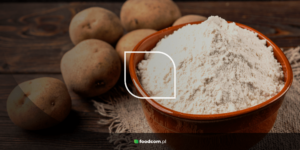Resumen
Índice
Read more to find out latest updates on additivies market.
There is a chance that prices will stabilize in mid-February and there will be more demand for lysine. At the moment there is a problem with availability of AJ lysine on the market.
European producers of high quality lysine are having difficulty fullfilling contracts because the demand is rising, together with prices for calf milk replacers producers.
Dicalcium phosphate is trading at record high levels, more than double what it was six months ago.
Prices of Chinese feed additives such as DCP imported into Japan continue to rise in the new year and some buyers have begun looking for cheaper substitutes. Traders are closely monitoring the market.
Choline chloride prices are holding steady as major Chinese producers maintain high bid prices. While China is still locked due to covid, there are less vessels and arranging shipments to smaller ports is difficult. There are many uncertainties regarding the behaviour of foreign governments in relation to the Omicron variant.
Moreover, it is also generally noted that products from China are cheaper for the African market than for Europe.
There is still a problem with access to xanthan gum because of testing for ETO (chemical component that contaminates the product).
There is hardly any product on the market that is not contaminated. The problem has not gone away and is probably not going to go any time soon.
Amino-acids
Lysine HCL
There is a chance that prices will stabilize in mid-February and there will be more demand for lysine. At the moment there is a problem with availability of AJ lysine on the market.
European producers of high quality lysine are having difficulty fullfilling contracts because the demand is rising, together with prices for calf milk replacers producers.
Di-calcium phosphate (DCP)
Dicalcium phosphate is trading at record high levels, more than double what it was six months ago.
Prices of Chinese feed additives such as DCP imported into Japan continue to rise in the new year and some buyers have begun looking for cheaper substitutes. Traders are closely monitoring the market.
Vitamins
Choline chloride
Choline chloride prices are holding steady as major Chinese producers maintain high bid prices. While China is still locked due to covid, there are less vessels and arranging shipments to smaller ports is difficult. There are many uncertainties regarding the behaviour of foreign governments in relation to the Omicron variant.
Moreover, it is also generally noted that products from China are cheaper for the African market than for Europe.
Others
Xanthan gum
There is still a problem with access to xanthan gum because of testing for ETO (chemical component that contaminates the product).
There is hardly any product on the market that is not contaminated. The problem has not gone away and is probably not going to go any time soon.
Categorías:







